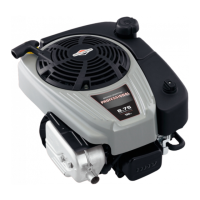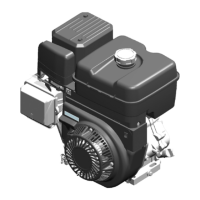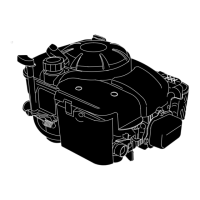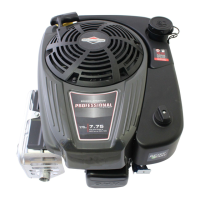• To reduce risk of electric shock, unplug charger from outlet before cleaning.
• Do not short circuit; never place any object into the battery contacts.
• The charger is not intended for use by persons (including children) with reduced
physical, sensory or mental capabilities, or lack of experience and knowledge, unless
they have been given supervision or instruction concerning use of the appliance by
a person responsible for their safety.
• Children should be supervised to ensure that they do not play with the charger.
When To Charge Battery Pack
First Time - The Lithium‐Ion battery pack was partially charged before shipment. To
maintain charge and to prevent damage while in storage, the battery pack is programed
to enter a “sleep mode”. A quick charge of approximately ten (10) seconds is required to
wake up the battery. Leave battery pack in charger until fully charged. To charge the battery
pack, see the
How To Charge Battery Pack
section below.
As Required - To check available charge, press the Battery Fuel Gauge button (E, Figure
9) and charge if required. See the
Battery Fuel Gauge
section.
How To Charge Battery Pack
1. Connect battery charger (F, Figure 10) to electrical outlet.
WARNING
Keep battery charger dry. Avoid exposing battery pack to rain or wet conditions.
2. Slide the battery pack (G, Figure 10) firmly into the battery charging bay (F). If the
red charging light does not illuminate, remove the battery pack and reinstall. Make
sure the battery pack is firmly seated in the battery charging bay.
• Red light (A, Figure 9) indicates battery pack is charging normally.
• Green light (B) indicates battery pack is fully charged.
• FLASHING red light (C) indicates the battery pack is either too hot or too cold
and will not accept a charge. Leave the battery pack connected and when
normal operating temperature is reached it will automatically start charging.
See the
Specifications
section for normal operating temperature.
• FLASHING red/green lights (D) indicate that battery pack will not charge and
must be replaced.
3. From “sleep mode”, the battery will wake up in approximately ten (10) seconds.
4. A completely discharged battery pack will fully charge in approximately one (1) hour.
The battery pack will stay fully charged if left on the charger.
5. When the green light indicates that the battery pack is fully charged, it can be removed
from the charger.
6. To check available charge, press the Battery Fuel Gauge button (E, Figure 9).
7. When not in use, disconnect battery charger from electrical outlet.
Battery Fuel Gauge
To check available charge, press the Battery Fuel Gauge button (E, Figure 9). The display
lights (H) will indicate the approximate amount of available charge remaining in the battery
pack.
Available ChargeDisplay Lights
78% to 100%Four lights
55% to 77%Three lights
33% to 54%Two lights
10% to 32%One light
less than 10%Flashing light
Start and Stop Engine
See Figure: 11, 12, 13, 14
Start Engine
WARNING
Fuel and its vapors are extremely flammable and explosive.
Fire or explosion can cause severe burns or death.
When Starting Engine
• Ensure that spark plug, muffler, fuel cap and air cleaner (if equipped) are in place
and secured.
• Do not crank engine with spark plug removed.
• If engine floods, set choke (if equipped) to OPEN / RUN position, move throttle (if
equipped) to FAST position and crank until engine starts.
WARNING
Improper use of battery and charger can result in an electrical shock or fire.
When Operating
• Keep battery charger dry. Avoid exposing battery pack to rain or wet conditions.
• To reduce the risk of electrical shock, do not allow water to flow into AC plug.
• Do not short circuit; never place any object into the battery contacts.
WARNING
POISONOUS GAS HAZARD. Engine exhaust contains carbon monoxide, a
poisonous gas that could kill you in minutes. You CANNOT see it, smell it, or taste
it. Even if you do not smell exhaust fumes, you could still be exposed to carbon
monoxide gas. If you start to feel sick, dizzy, or weak while using this product,
shut it off and get to fresh air RIGHT AWAY. See a doctor. You may have carbon
monoxide poisoning.
• Operate this product ONLY outside far away from windows, doors and vents to reduce
the risk of carbon monoxide gas from accumulating and potentially being drawn
towards occupied spaces.
• Install battery-operated carbon monoxide alarms or plug-in carbon monoxide alarms
with battery back-up according to the manufacturer's instructions. Smoke alarms
cannot detect carbon monoxide gas.
• DO NOT run this product inside homes, garages, basements, crawlspaces, sheds,
or other partially-enclosed spaces even if using fans or opening doors and windows
for ventilation. Carbon monoxide can quickly build up in these spaces and can linger
for hours, even after this product has shut off.
• ALWAYS place this product downwind and point the engine exhaust away from
occupied spaces.
NOTICE
This engine was shipped from Briggs & Stratton without oil. Before you start
the engine, make sure you add oil according to the instructions in this manual. If you
start the engine without oil, it will be damaged beyond repair and will not be covered
under warranty.
Note:
Equipment may have remote controls. See the equipment manual for location and
operation of remote controls.
1. Check the engine oil. See the
Check Oil Level
section.
2. Check the battery tray on top of the engine for debris and if dirty clean with a brush
or cloth. Mount the battery pack (B, Figure 11) in the engine battery tray on top of
the engine. Make sure battery pack is securely installed. Battery pack may represent
equipment key in some instances.
Note:
To wake up a new battery, a First Time quick charge of approximately ten (10)
seconds is required. See the
When To Charge Battery Pack
section.
3. Make sure equipment drive controls, if equipped, are disengaged.
4. Move the fuel-shutoff valve (D, Figure 12), if equipped, to the open position.
5. Move the throttle control (A, Figure 12), if equipped, to the fast position. Operate the
engine in the fast position.
6. Push the stop switch (F, Figure 12), if equipped, to the on position.
7. Models
with
electric start switch: Hold the engine stop lever (C, Figure 13), if
equipped, against the handle. Move the electric start switch to the start position. See
the equipment manual for the location and operation of the electric start switch.
8. Models
with
electric start button: Hold the engine stop lever (C, Figure 13), if
equipped, against the handle. Push the electric start button (G, Figure 12) to start
the engine. See the equipment manual for the location and operation of remote
electric start button.
9. Models
without
electric start switch or start button: Hold the engine stop lever
(C, Figure 13) against the handle. Engine will automatically start. See the equipment
manual for operation of the engine stop lever.
NOTICE
To extend the life of the starter, use short starting cycles (five seconds
maximum). Wait one minute between starting cycles.
If the engine will not crank and the battery pack display lights are flashing, then the battery
pack temperature is too hot or current draw is too high. All four battery display lights (H,
Figure 14) will flash a warning for 10 seconds. The battery pack does not have a fuse, but
9
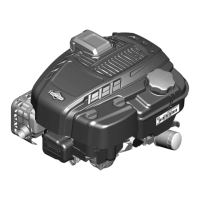
